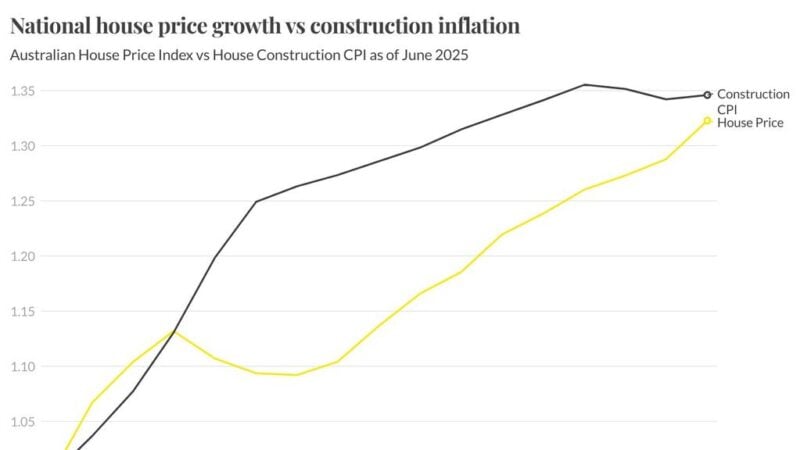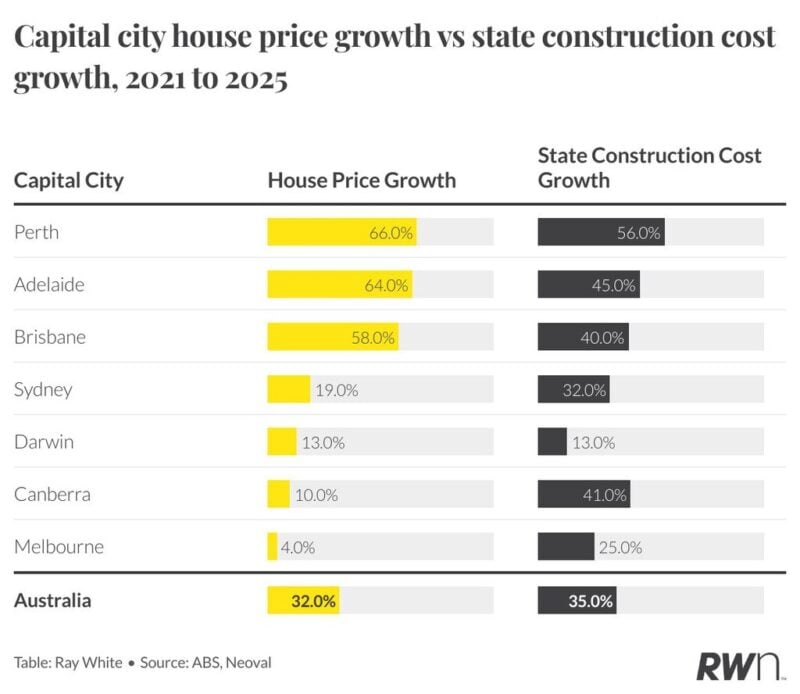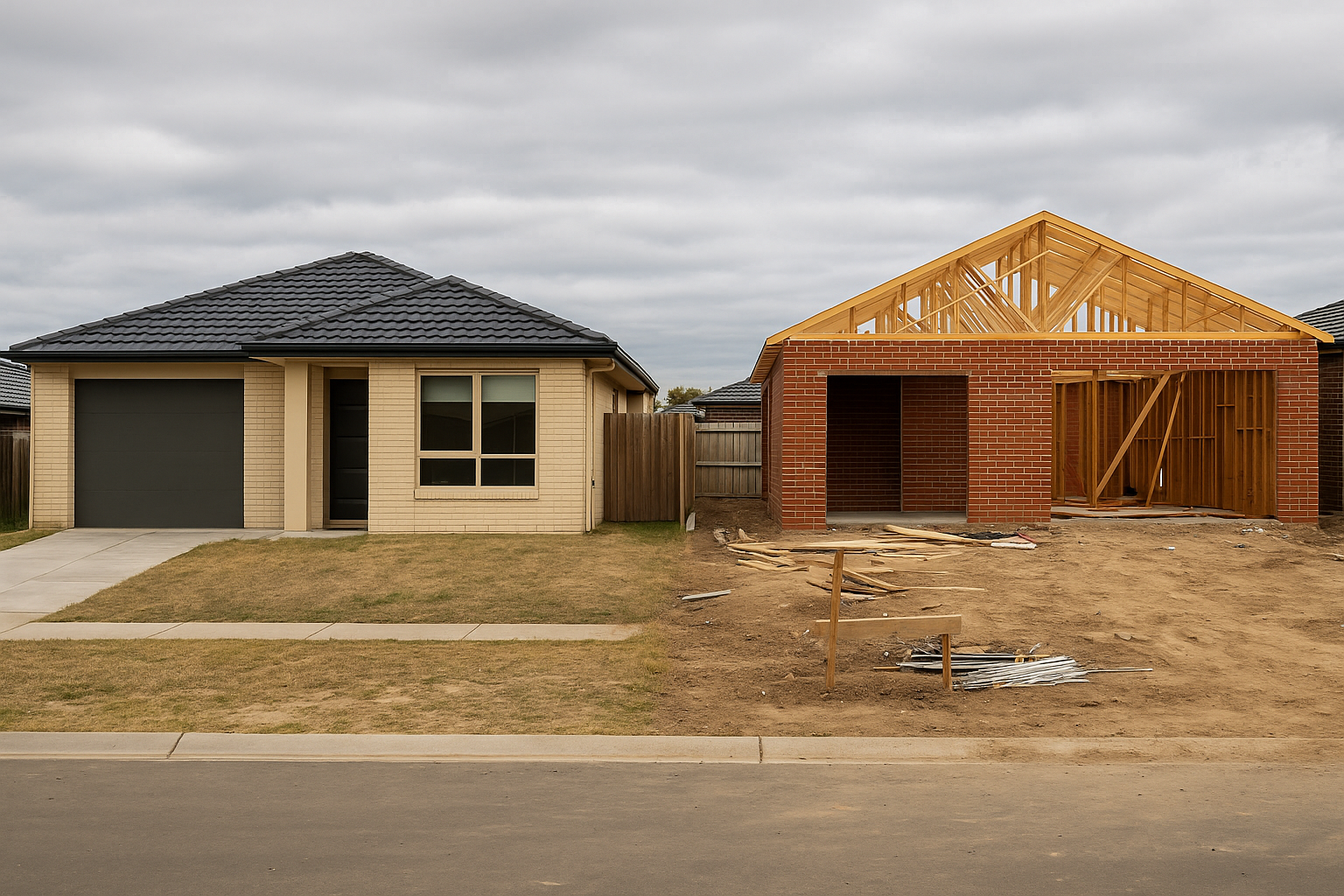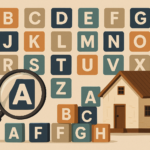
Key takeaways
From 2021 to 2025, construction costs rose 35%, while house prices climbed 32%.
This 2.3% gap is a huge improvement compared to the 16% gap identified in December 2023.
Markets like Perth, Adelaide and Brisbane are better positioned for new housing supply.
Sydney, Melbourne and Canberra are likely to face continued supply challenges because new construction remains uneconomical.
For the first time in years, house prices and construction costs are moving closer together — a positive sign for future housing supply.
Not long ago, it was clear-cut: building new just didn’t make financial sense.
As Nerida Conisbee, Ray White's Chief Economist pointed out back in December 2023, “construction costs had dramatically outpaced house price growth, making it cheaper to buy an established home than build new.”
At that time, the numbers were stark.
Capital city house prices had risen just 11% over two years, while construction costs had surged 27%.
The gap was so wide that buying established wasn’t just cheaper, it was really the only logical option.
However, now research from Ray White , shows that while it remains cheaper to buy than build in most markets, the gap between the cost of buying versus building has narrowed significantly.
In fact, in some capitals, house price growth is now outstripping construction cost escalation; a complete reversal of the trend we’d seen for years.
National picture: convergence at last
Over the four years from 2021 to 2025, construction costs have risen 35% according to Ray White analysis meanwhile, house prices have risen by 32%.
That’s just a 2.3 percentage point difference, compared with the massive 16-point gap that Ms Conisbee identified less than two years ago.
What this shows is that the runaway construction cost growth of the pandemic era has slowed, while house prices have caught up.
For the first time in years, the lines are converging, and that’s critical for the economics of new housing supply.

Source: Ray White
Perth, Adelaide and Brisbane turn the tables
The standout story is Perth.
In late 2023, Ms Conisbee noted Perth had seen house prices rise 20% while construction costs jumped 40%. That imbalance discouraged new building.
But by mid-2025, Perth has flipped the script. House prices are up an incredible 66% since 2021, outpacing WA construction costs, which have risen 56%.
As Nerida highlights,
“Perth has not only closed the gap but reversed it – finally reaching replacement cost levels that encourage new home construction.”
Adelaide and Brisbane tell a similar story:
-
Adelaide: house prices up 64% vs construction costs up 45%
-
Brisbane: house prices up 58% vs construction costs up 40%

Note: These cities have reached the point where new builds make sense again, a critical shift for future supply.
Eastern Capitals: still behind the curve
The picture is far less encouraging in Sydney, Melbourne and Canberra.
-
Sydney property prices are up just 19% since 2021, while construction costs rose 32%.
-
Melbourne property values have barely moved with only 4% house price growth against a 25% jump in costs.
-
Canberra shows the worst mismatch: 10% price growth versus a 41% surge in building costs.
In these markets, the economics of new construction remain poor.
Developers and buyers alike will struggle to justify new builds until prices climb further or costs come down.

Source: Ray White
Supply implications
Now this divergence matters.
The Federal Government’s Housing Accord aims to deliver 1.2 million new homes in the next five years. That was ambitious at the best of times.
In markets like Perth, Adelaide and Brisbane, we may now see more construction activity, because the economics finally stack up.
But in Sydney, Melbourne and Canberra, the equation is still broken, meaning limited new supply and more pressure on established housing stock.
As Ms Conisbee concludes:
“Despite the narrowing gap, it remains cheaper to buy an established home than build new in most markets.
However, the momentum is clearly shifting.”
Final thoughts
Australia’s housing market is at a turning point.
While established homes are still cheaper in most cities, the convergence of house prices and construction costs signals a healthier balance is returning.
For investors, this is worth watching closely as there are still opportunities, particularly in Melbourne and Sydney, to buy established properties with considerable inbuilt equity (as they are substantially below replacement costs).














